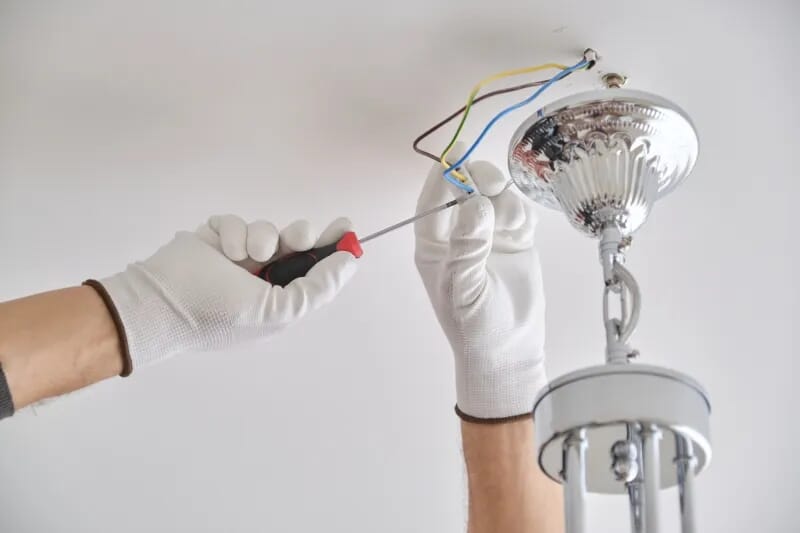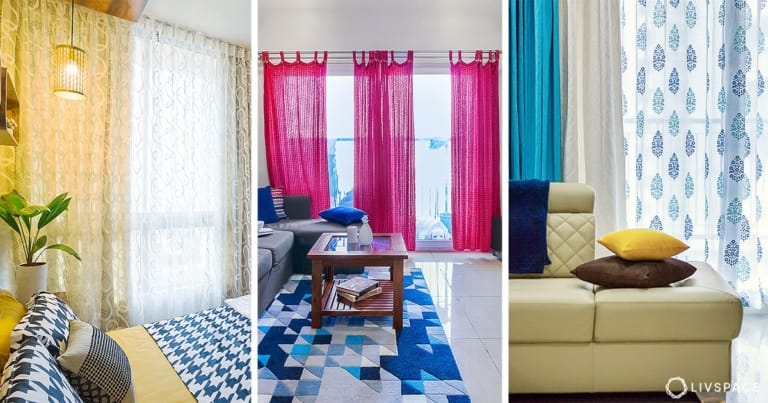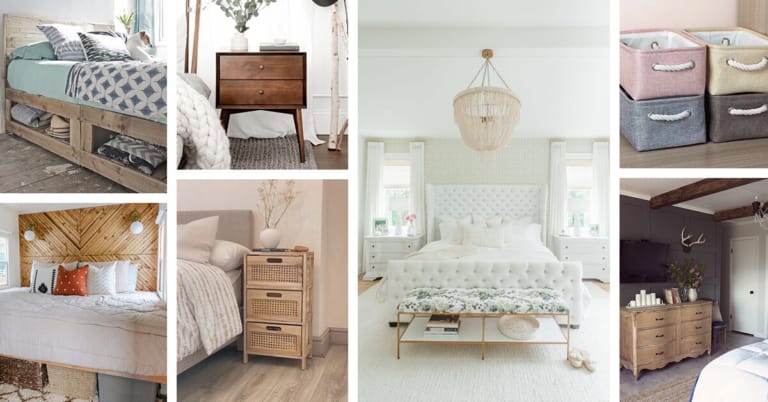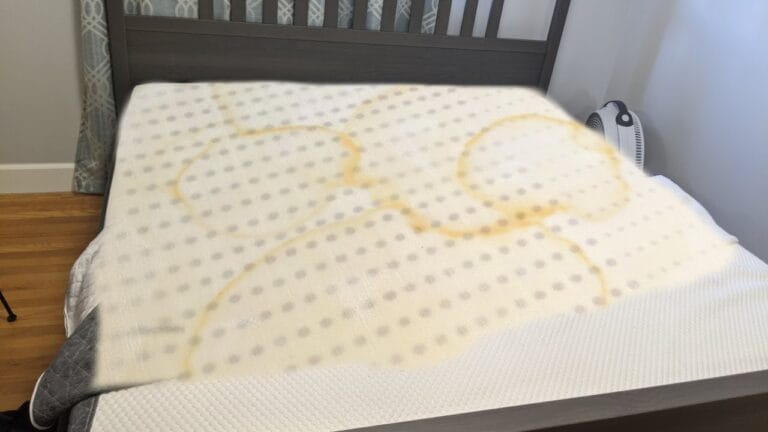
Are you wondering about the safety considerations for bedroom lighting installation? Well, you’ve come to the right place! When it comes to creating a cozy and well-lit bedroom, it’s important to prioritize safety alongside style. In this article, we’re going to explore some key things to keep in mind when installing lighting in your bedroom.
Now, you might be thinking, “Why do I need to worry about safety? It’s just lighting!” Trust us, safety should always be a top priority no matter what you’re doing. Properly installed lighting can help prevent accidents and ensure that your bedroom remains a safe and comfortable space.
So, buckle up and get ready to learn about the safety considerations for bedroom lighting installation. We’ll cover everything from selecting the right fixtures to proper wiring techniques, to avoiding common hazards. Let’s dive in and shed some light on the subject, shall we?
What Are the Safety Considerations for Bedroom Lighting Installation?
When it comes to bedroom lighting installation, safety should always be a top priority. Here are some important safety considerations to keep in mind:
1. Choose UL-listed fixtures and bulbs.
2. Follow manufacturer instructions for installation.
3. Ensure proper grounding and electrical connections.
4. Avoid overloading circuits.
5. Use proper wiring techniques and materials.
By following these safety guidelines, you can ensure a secure and enjoyable bedroom lighting installation experience.
Choosing the Right Bulbs
When selecting bulbs for your bedroom lighting, it’s important to consider factors such as wattage, color temperature, and energy efficiency. Opt for LED or CFL bulbs that consume less electricity and produce less heat than traditional incandescent bulbs.
This not only reduces the risk of overheating and fire, but also lowers your energy bills. Additionally, look for bulbs with a color temperature between 2700K and 3000K for a warm and cozy ambiance in your bedroom.
Proper Wiring and Installation
One of the most crucial safety considerations for bedroom lighting is the proper wiring and installation. If you’re not experienced with electrical work, it’s best to hire a professional electrician to ensure compliance with building codes and safety standards.
When installing light fixtures, make sure to turn off the power supply and use a voltage tester to confirm that there is no electrical current flowing through the wires. Properly secure all wires with wire nuts and electrical tape, and avoid overloading circuits by distributing the load evenly.
Another important aspect of installation is ensuring that all light fixtures are securely attached to the ceiling or wall. This prevents them from falling and causing injuries. Use appropriate hardware, such as anchors or brackets, and follow the manufacturer’s instructions for installation. If you’re unsure about the process, consult the help of a professional to ensure safe and secure mounting.
Positioning and Placement
The positioning and placement of your bedroom lighting fixtures can significantly impact safety. Ensure that all light fixtures are well clear of any flammable materials such as drapes, bedding, or furniture. This reduces the risk of accidental fires caused by heat generated from the light bulbs.
Lighting Control and Accessibility
Having convenient and accessible lighting controls in your bedroom is essential for both safety and comfort. Ensure that light switches are easily reachable from the bed and entryways to avoid stumbling in the dark. Consider installing dimmer switches to control the level of illumination, as this can help create a relaxing and calming atmosphere in the evenings.
Benefits of Energy-Efficient Lighting
Aside from safety considerations, opting for energy-efficient lighting in your bedroom brings a range of benefits. LED and CFL bulbs not only consume less electricity, but they also have a longer lifespan compared to traditional incandescent bulbs. This means fewer replacements and reduced maintenance costs over time. Additionally, energy-efficient lighting helps to lower your carbon footprint and contributes to a greener environment.
Leveraging Natural Light
Another aspect of bedroom lighting safety is leveraging natural light whenever possible. Consider the orientation of your bedroom windows and plan your lighting layout accordingly. Position task lighting, such as reading lamps or desk lamps, near windows where natural light is abundant during the day. This not only reduces your reliance on artificial lighting but also enhances the overall aesthetic and mood of your bedroom.
Utilizing Nightlights
Finally, incorporating nightlights in your bedroom can boost safety, particularly during nighttime hours. Nightlights provide a soft and gentle illumination that allows you to navigate your bedroom without fully waking up or straining your eyes. This is particularly important for children, older adults, or individuals with mobility issues who may need to move around during the night.
Key Safety Considerations for Bedroom Lighting Installation
In summary, here are the key safety considerations for bedroom lighting installation:
- Choose LED or CFL bulbs for energy efficiency and lower heat output.
- Ensure proper wiring and installation by hiring a professional electrician.
- Position light fixtures away from flammable materials.
- Install lighting controls that are easily accessible from the bed and entryways.
- Consider incorporating dimmer switches for adjustable illumination.
- Benefit from energy-efficient lighting and its long lifespan.
- Maximize natural light and plan your lighting layout accordingly.
- Incorporate nightlights for enhanced safety during nighttime hours.
By adhering to these safety considerations, you can create a well-lit and safe bedroom environment that promotes relaxation, comfort, and peace of mind.
Frequently Asked Questions
When it comes to installing lighting in your bedroom, safety should be a top priority. Here are some common safety considerations to keep in mind:
1. How should I choose the right type of lighting for my bedroom?
When selecting lighting for your bedroom, it’s essential to consider the type of light fixture and its location. Choose fixtures that are designed for residential use and have proper insulation to prevent electrical shocks. Additionally, ensure that the wattage of the bulbs you use is appropriate for the fixtures to avoid overheating and potential fire hazards.
It’s also wise to opt for energy-efficient lighting solutions that generate less heat, such as LED bulbs, to reduce the risk of accidental burns or fires. Lastly, make sure to follow the manufacturer’s instructions for installation and maintenance to ensure the proper functioning and safety of the lighting fixtures.
2. Are there any specific electrical safety precautions I should take during installation?
Before installing bedroom lighting, it’s crucial to turn off the power supply to the area where you’ll be working. You can do this by switching off the circuit breaker or isolating the specific circuit for the bedroom. This step ensures that you won’t accidentally come into contact with live electrical wires, reducing the risk of electric shock.
Additionally, it’s advisable to wear insulated gloves or use insulated tools when handling electrical components to further protect yourself from any potential electrical hazards. If you’re unfamiliar with electrical work, it’s best to hire a qualified electrician to carry out the installation and ensure that all wiring and connections are done correctly according to local building codes.
3. What should I consider when positioning the lighting fixtures in my bedroom?
The position of your bedroom lighting fixtures can impact both safety and functionality. To prevent the risk of accidentally knocking them over, ensure that free-standing lamps or bedside table lamps are stable and placed on sturdy surfaces. Avoid placing them near curtains, bedding, or other flammable materials.
For overhead lighting, consider the placement of ceiling fixtures to avoid any potential glare or shadows that may hinder visibility. It’s also important to ensure that fixtures are securely mounted, especially if they need to carry the weight of a bulky chandelier or pendant light.
4. Can I install lighting fixtures near a water source in my bedroom?
No, it’s not advisable to install lighting fixtures near water sources in your bedroom. Electrical components can pose a significant safety risk when exposed to water. Water and electricity don’t mix well and can cause electrical shocks or short circuits that may lead to fires.
Therefore, avoid installing lighting fixtures near bathroom sinks, bathtubs, or showers. Additionally, make sure there are no water leaks or moisture issues in the vicinity of the light fixtures to prevent any potential damage to electrical components.
5. Are there any specific safety considerations for children’s bedrooms?
When it comes to children’s bedrooms, there are a few additional safety considerations to keep in mind. Make sure that all electrical outlets in the room have covers or tamper-resistant receptacles to prevent young children from inserting objects into them.
Furthermore, avoid using long or dangling cords for curtains or blinds, as they can pose a strangulation hazard for young children. Opt for cordless window coverings or use cord shorteners to keep them out of reach. Lastly, ensure that any nightlights or decorative lighting elements in a child’s room are child-safe and not easily accessible to prevent any accidents or injuries.
When installing lighting in your bedroom, safety should be a top priority. It’s important to choose the right fixtures and bulbs, consider the placement and control options, and follow electrical safety guidelines to prevent accidents. Make sure to hire a qualified electrician if you’re unsure about any aspect of the installation.
To ensure the safety of bedroom lighting, remember to use fixtures that are appropriate for the space and its intended use. Consider the brightness and color temperature of the bulbs to create a comfortable and functional lighting environment.
Don’t forget to install proper controls, such as switches and dimmers, to easily adjust the lighting to your needs. By paying attention to these safety considerations, you can create a well-lit and safe bedroom for a good night’s sleep.






